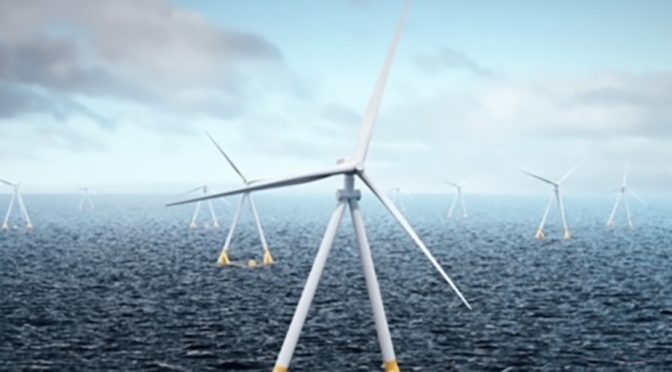BRUNEL is a floating wind turbine support structure designed to support a 15 MW wind turbine. The substructure is a column stabilized unit with three columns connected by submerged horizontal pontoons. The rotor-nacelle assembly (RNA) is supported by two inclined towers meeting at a distance below the nacelle interface. The structure will be single point mooring through a turret in order to weather vane. This innovative design aims for a modular approach, suitable for serial and automized production in the existing global supply chain.
The intention of the certification is to show proof of concept for Fred. Olsen 1848’s floating wind turbine support structure, BRUNEL. With achieving this first step in the certification process, DNV considers the BRUNEL concept feasible for further development.


“We are happy to see the announcement by the Norwegian government on 11 May 2022 to develop 30 GW of offshore wind capacity by 2040,” explains Kim Sandgaard-Mørk, Executive Vice President for Renewables Certification at DNV. “To achieve this growth in a safe, reliable, and sustainable manner, Norwegian wind energy projects need access to robust and trusted risk management measures such as certification. Mitigating risks via certification is particularly valuable for floating offshore wind projects in securing project finance and demonstrating operational application.”
“As countries seek to reduce their CO2 emissions in the race to meet net-zero targets and decarbonize their energy systems, interest in floating wind projects is beginning to grow across the globe and Norway continues to be a leader in this field as we expect further calls for tenders later this year. In Norway, DNV’s local certification team based in Høvik is expanding to support the country’s advances in offshore wind.” explains Sille Grjotheim, Director and Country Manager Norway for Renewables Certification at DNV.
Anne Lene Haukanes Hopstad, DNV’s Project manager states “Achieving the Statement of Feasibility is an important first step for BRUNEL. It was an interesting project to undertake, and we are looking forward to continued certification of BRUNEL in the next development phases. As designs and technologies develop, ensuring safety is paramount for floating offshore wind projects in securing project finance and demonstrating operational applications.”
Geir Grimsrud, Chief Technical Officer, Fred. Olsen 1848 explains “For BRUNEL, the Statement of Feasibility is a key milestone in documenting the technological maturity of our floating foundation technology. It has been important for us to involve DNV at an early stage to ensure certification from the onset. We thank DNV for a prompt and timely process and look forward to continuing the further process with DNV on BRUNEL.”
Sofie Olsen Jebsen, Chief Executive Officer, Fred. Olsen 1848 states “The potential of floating offshore wind is immense. To drive the industry forward it is critical to unlock sustainable solutions with commercial viability and technical excellence. BRUNEL responds to these challenges, and by achieving a Statement of Feasibility from DNV an important milestone has been accomplished in our efforts to do our part to reduce LCOE and enable floating wind at large scale.”
Fred. Olsen 1848 is an innovation and technology company that focuses on development and commercialization of innovative technologies related to renewable energy. We are a determined and multidisciplinary team with a broad variety of industry experience within the field of renewables, all working towards our goal to make sustainable energy more widely available to help combat climate change.
Innovation and curiosity are our DNA, and our ideas are based on consistent experience and knowledge built up over 170 years of identifying and solving challenges, from when the Fred. Olsen ship owning enterprise commenced in 1848.
The main technologies of Fred. Olsen 1848 are aimed at solving some of the key industry challenges within emerging renewable energies.


